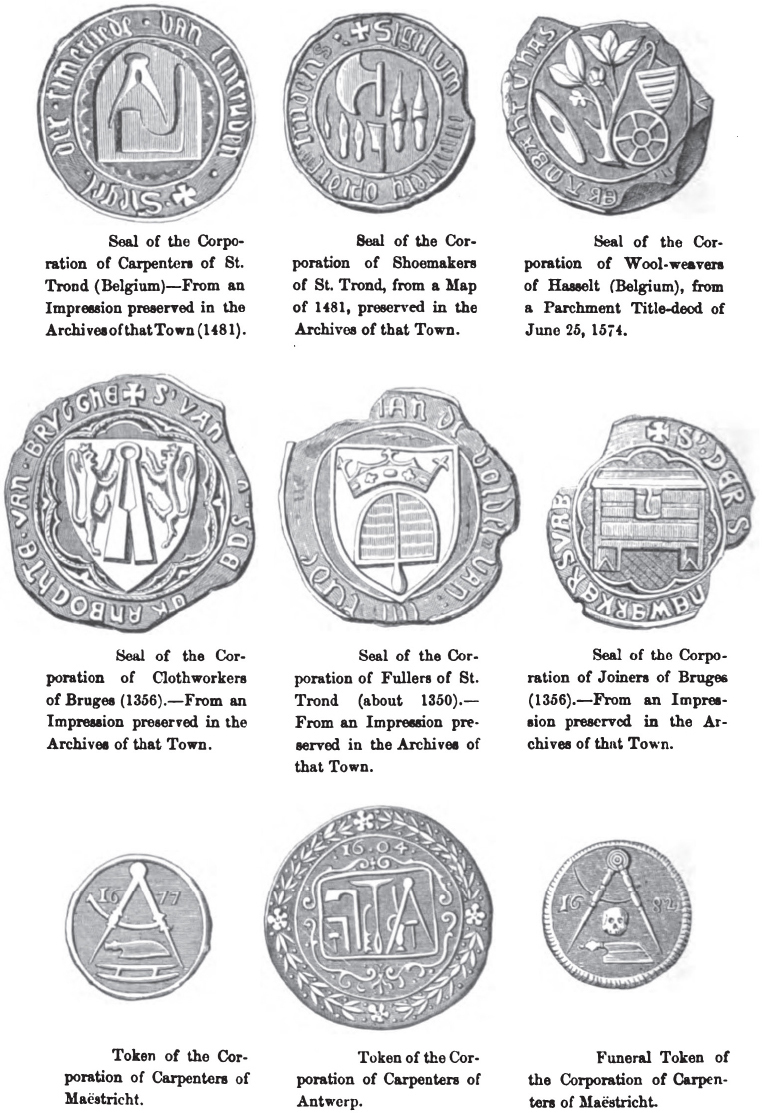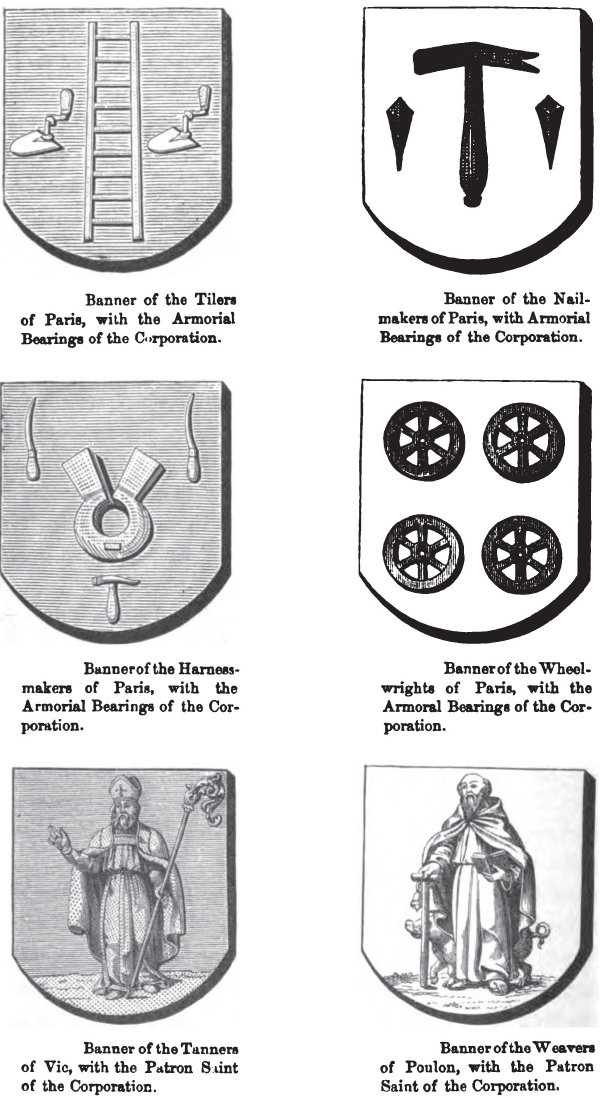DOCUMENT 10.3
DOCUMENT 10.3
Guild Seals and Banners, ca. 1250–1350
Guilds were much more than trade associations. They were rich and vibrant communities with complex relationships to the towns and cities in which they were based. Tightly woven into the fabric of urban civic and religious life, they nonetheless maintained a strong sense of corporate unity and intense pride in their distinctive identities. Guild insignia reflected both of these aspects of the relationship between guilds and the larger community. On the one hand, guild insignia were prominently displayed in public buildings, proclaiming the guild’s inclusion in and contribution to the town’s collective political and spiritual life. Public ceremonies and processions featured guild members proudly holding banners bearing their guild’s symbols. On the other hand, in much the same way that an aristocratic coat of arms conveyed exclusivity and pride in family, guild insignia spoke to a corporate identity that carried with it a unique set of traditions, rights, and privileges. With this is mind, examine the following images of guild seals and banners. What do they tell you about how guilds saw themselves? What do they reveal about the roles guilds played in urban life?


QUESTIONS TO CONSIDER
Question
In what ways do the guild stamps resemble aristocratic coats of arms? What analogies might medieval guild members have made between their insignia and those of noble families?
Question
What importance should we attach to the use of religious imagery in some of the guild banners? Does the inclusion of such imagery surprise you? Why or why not?